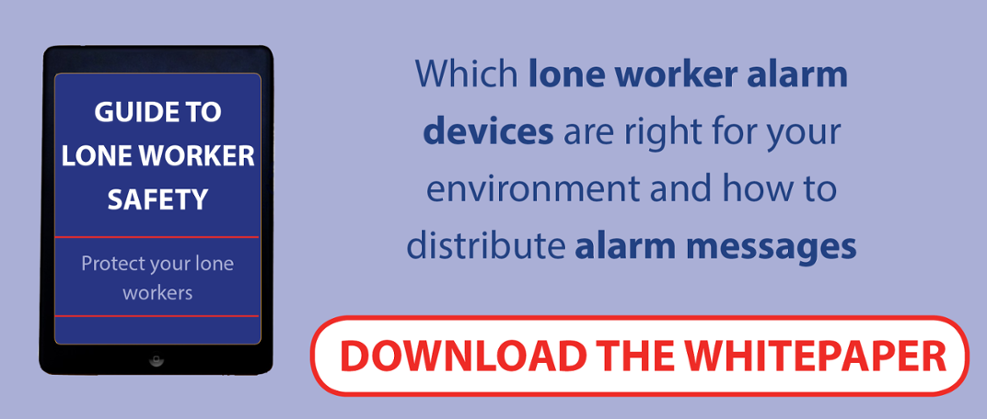
A work-related accident is any manufacturer's worst fear. First and foremost, it is a tragedy. Beyond that it can create fear among the rest of the workforce and doubt in the public's eye. For this reason, many workplace safety regulations have been implemented, both by law and by choice, in manufacturing plants. Unfortunately, many of these safety plans do not account for lone workers. It is not that management or the government has forgotten about these individuals. It is simply that it can be challenging to create effective safety and security measures due to the fact that they work in isolated locations. However, there are a few practices that can be implemented to limit accidents and ensure lone worker safety.
Develop A Lone Worker Policy
When you have employees working in isolation or out of sight of colleagues, you need a policy in place to protect them. The lone workers, other employees and management need to know what their responsibilities are when it comes to keeping lone workers safe. It should be as specific as possible. The policy should provide safety tips, precautionary steps, and a strict system for ensuring the prevention of harm and injury. It should also include a fleshed out and specific method for dealing with emergency situations. This can seem like a momentous undertaking for such a tricky and unexplored area, but even starting with the basics and building on them over time will serve management and employees well.
Train The Workforce
It's not enough to just have a manual. The workforce and the management need to know what's in the manual and they need to know that they have the ability to follow its instructions. The only way to ensure this is through training. The policy should be turned into a short course that is easy to understand and remember. Every individual should know what their responsibility is. After the manual is understood, the workforce and management should also go through practical scenarios and drills so they can physically walk through the steps that are necessary to stay safe and the steps necessary for when an emergency occurs. To truly reinforce the information, random and surprise drills are always effective. Everyone will quickly learn how to think and act on their feet when a dangerous situation happens in the workplace.
Train Lone Workers
Lone workers, by definition, have no one to collaborate with while on the job. They must be competent and knowledgeable enough to handle everything that comes their way. With machinery and working methods constantly evolving and improving, lone workers need ongoing training. This can be done by bringing specialists in to personally train workers or by sending them out to courses. But getting lone workers all of the knowledge that they need to succeed, and succeed safely, is essential.
Assess Possible Risks
When a new location is opened or a new lone worker begins, management and the worker need to walk through the space and identify potential risks. This should not be done lightly. A meticulous walk-through is necessary to find areas that might cause problems. Once risks are found, there needs to be a period of ideation to figure out how to prevent or minimize those risks. And every effort should be made to ensure that the implementation of these preventative measures is effective. These measures, and the risks themselves, should be evaluated on a regular basis.
Request Incident Reports
Accidents don't always go bad. Sometimes things go wrong and no one gets hurt. These close calls are a sign that something in the lone worker's situation needs to be attended to. Maybe it's the worker's actions. Maybe it's the environment. Maybe it's insufficient training. Whatever the cause of the near miss, it needs to be addressed. This can only be done if management knows about it. The key to encouraging reports from lone workers is letting them know that this is not so they can be punished, but rather so they can be protected.
Implement An Alarm System
The alert systems of the past are not effective, and they're certainly not safe. Supervisors coming by at regular intervals is not sufficient. A lone worker checking in with a mobile phone or landline isn't enough. There is too much that can go wrong in between each check-in. An alert or alarm system that is automated, or even non-automated, is essential. Lone workers must have a way to call for help the very moment they need it and the call receiver needs to be able to get this call instantaneously and respond quickly and effectively. Accidents don't happen at convenient times so alert systems need to be integrated to allow lone workers, at 'inconvenient' times, to reach out.
Create A Responder Hierarchy
Once an alert and alarm system has been set up, it should not just be a direct link between the lone worker and their supervisor. There needs to be several levels of safety. This is in case the first alert recipient is indisposed. There should be a second and third recipient in place who can also receive alerts, understand them and initiate the emergency response. Lone workers need to know that they can always rely on someone being available to help them at all times. When there are backups put in place, they will be able to breathe a little easier--and so will management.
Keeping employees safe is every manager's goal. With lone workers, though, this is an especially challenging task. By following some simple guidelines and having the latest alert technology in place, manufacturing workplaces can become considerably safer work environments for lone workers.





